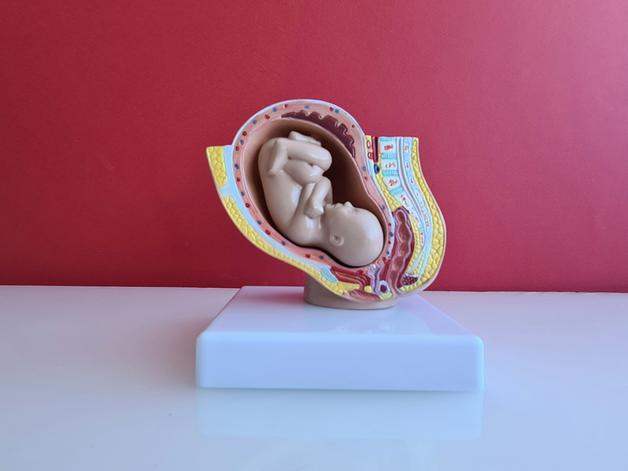When you first notice your clothing getting tighter, or that unmistakable roundness in the mirror, it’s hard not to feel a hundred questions bubbling up. Am I showing too soon? Is this normal? For many parents, pregnancy belly growth is surrounded by curiosity, uncertainty, even a touch of anxiety. Some weeks, your reflection changes overnight; other times, progress seems snail-slow. The rhythm? Unpredictable. The variables? Numerous. There’s reassurance in knowing you aren’t required to fit a pre-set shape or pace. Whether you’re marveling at gentle curves or navigating the discomfort of a rapidly expanding bump,
pregnancy belly growth is a journey unique to each body and baby. Let’s untangle what’s typical, underline when extra attention is wise, and bring a blend of scientific clarity and day-to-day wisdom for this major transformation.
How the pregnancy belly grows: Anatomy, hormones and daily change
Pregnancy belly growth is not simply the product of a growing baby. It’s an interplay—a finely choreographed sequence involving the uterus (which stretches from roughly the size of a lemon to a watermelon!), the placenta, amniotic fluid, and adjusting tissues. Imagine this: by about 12 weeks, your uterus peeks just above the pubic bone. Around 18–20 weeks? That upper curve, the fundus, is circling your navel, a subtle migration driven by hormonal shifts and rapid cellular expansion.
- Progesterone, a star player, relaxes smooth muscles—causing early bloating, slower digestion, sometimes constipation.
- Estrogen fuels tissue growth and ramps up blood flow, ensuring everything from skin to uterine walls keep up.
- Think of relaxin as your body’s way of softening ligaments—setting the stage for birth, but sometimes producing aches as the pelvic structure adapts.
- Supporting ligaments are not passive: they stretch and strain, occasionally sparking those well-known twinges at the lower belly or groin.
As the bump appears, a question often emerges: is this true uterine growth or simply the byproduct of yesterday’s extra chapati? True growth tends to stick, persisting regardless of meals or time of day. Bloated bellies, by contrast, wax and wane, often most pronounced in the evenings.
Pregnancy belly growth: Trimester by trimester
First trimester (weeks 1–12): Subtle signals
Pregnancy starts with whispers rather than shouts—mild expansion, perhaps, but mostly due to digestive changes. Some find their waistlines softening or pants pinching, often blaming water retention or hormonal bloating. Here, the baby is still nestled deep within the pelvis. While social media may display “tiny bumps” in these early weeks, it’s typically not the uterus yet—more a scene-setter of
early pregnancy symptoms.
Second trimester (weeks 13–26): The famous baby bump arrives
This is when “showing” really begins. Between 16–20 weeks, many start seeing recognizable roundness—the classic pregnancy belly growth. The fundus rides up to the level of your navel, belly buttons begin their shape-shifting (flattening or even popping outward), and gentle flutters from inside may announce baby movements. If it’s not your first pregnancy, expect a much earlier and more pronounced bump, possibly as early as 13–16 weeks.
Different body types, from petite frames to those with core strength, display this transformation at distinct moments:
- Short torsos? The bump may ride high and be visible sooner.
- Longer torsos or toned abdomens? Sometimes the bump remains “hidden” well past 20 weeks.
- Size isn’t a competition. Fundal height—a medical check involving the distance from pubic bone to the top of the uterus—gives a guide that is more reliable than any visual appraisal (expect roughly 1 cm growth per week from 20–36 weeks, with a wiggle room of ±2 cm).
Third trimester (weeks 27–40+): Peak expansion and shifting shape
Now, the belly often feels tighter, rounder, and occasionally unwieldy. Skin may stretch rapidly, bringing stretch marks or that vertical, darker line known as
linea nigra. Rib pressure appears, and breathlessness isn’t rare, especially if the uterus is crowding the diaphragm. By 37 weeks, “lightening” occurs for many—the baby drops lower into the pelvis, changing the bump’s silhouette yet again, sometimes reducing upper belly pressure and creating more pelvic heaviness.
Multiples? Expect this journey to accelerate. Twins or triplets often bring
pregnancy belly growth that outpaces single pregnancies by weeks or even months, with measurements running 2–6 cm higher at every milestone.
When will you start to show? Predictors and pace
Every expectation is shaped by genetics, body shape, muscle tone, and pregnancies past. First pregnancies commonly mean a later, more gradual appearance; the well-toned may show “late,” while those who have experienced pregnancy before recognize the tell-tale curve much earlier. Sometimes the first whisper of a bump emerges at 12 weeks, but for most,
consistent pregnancy belly growth is visible by 16–20 weeks.
What can make the bump seem larger or smaller?
- Lower pre-pregnancy BMI or petite frames: earlier, more noticeable curve.
- Retroverted uterus (tilted backwards) or posterior placental location: the bump may “hide.”
- Amniotic fluid volume and baby’s position: both can shift daily contours even when growth is perfectly healthy.
- Recent meals, bloating, or constipation: these effects amplify evening roundness or “pop” the belly temporarily.
A simple, reliable self-check? Photograph yourself weekly in similar clothes from the side, and compare month-to-month rather than day-to-day. Real uterine growth won’t fade overnight.
Timeline: Week-by-week evolution
- Weeks 4–8: Hormones in overdrive mean bloating, digestive changes, and subtle waistband strain.
- Weeks 9–13: For some, the uterus just starts rising above the pelvis; most bumps remain under wraps.
- Weeks 14–17: Soft, gradual rounding appears, sometimes nudging you into maternity clothes.
- Weeks 18–22: The fundus meets the navel. Movements become more obvious, and baby “announces” its growing presence.
- Weeks 23–27: Now the bump is visible to others, responding to baby’s position and placenta’s placement.
- Weeks 28–31: The third trimester dawns, skin stretches further, breathlessness may debut, and support garments prove their worth.
- Weeks 32–36: Maximum expansion for most, with rapid baby weight gain and potential skin changes.
- Weeks 37–40+: The grand finale—bump may lower as the baby drops, day-to-day shape shifts, and anticipation peaks.
Measuring and tracking: Home and clinical check-ins
Pregnancy belly growth is tracked in clinics with fundal height—measured from the pubic bone to the uterus’s highest point. Expect around 24 cm at 24 weeks, 32 cm at 32 weeks, but remember: this is a guide, not gospel. Many factors—placenta, baby’s position, amniotic fluid levels, BMI—influence these numbers.
Feel drawn to track at home? Weekly side photos, logs of symptoms and weight, and noting baby’s movements provide a reassuring progression. A tape measure can offer an estimate—lying back, measure from pubic bone to bump’s peak—but don’t rely on it for major decisions. The gold standard for concern (too much or too little growth) will always be a combination of fundal height checks and ultrasound.
If the numbers deviate from expected patterns, clinicians may suggest an ultrasound—measuring head, abdomen, femur, and
estimated fetal weight to assess genuine growth and fluid levels.
Beyond the basics,
pregnancy belly growth wears a multitude of influences:
- Body shape and muscle tone: A well-toned abdomen might “hide” the bump longer, while a petite frame or loose abdominal wall (especially after previous pregnancies) displays early and prominent growth.
- Baby, placenta, and fluid: Baby’s size, genetics, and position—head up, head down, sideways—can all shift contours. An anterior placenta projects a bump more strongly, while a posterior placenta may make the change subtler.
- Medical conditions: Uterine fibroids, gestational diabetes (linked to larger babies), and even small details like recent heavy meals can mimic or amplify the bump. Sometimes, what looks small is perfectly normal, masked by muscle or body habitus.
Myths, skin changes, and what’s “normal”
Let’s clear the confusion: A high or low belly does not reveal baby’s sex. The shape—pointy, round, wide, compact—reflects anatomy, ligament flexibility, and baby’s current pose.
What about skin changes?
- Linea nigra: a dark line from navel downwards, common from the second trimester onward.
- Stretch marks: purplish streaks that fade post-birth, linked mostly to genetics and the speed of belly expansion.
- Belly button: flatten or even pop outward—pain, though, deserves a check with your clinician.
Gentle moisturizers, hydration, and sun protection can help comfort but cannot promise to eliminate stretch marks.
When to be vigilant: Signs for concern
Certain situations call for prompt attention:
- Little or no belly growth after 20 weeks
- Sudden, rapid expansion, especially with discomfort
- Persistent pain, regular intense contractions, abnormal fluid loss, or bleeding
- Severe swelling, headaches, visual changes, or an unexpected drop in fetal movement
Potential culprits? Incorrect due dates, too little amniotic fluid, fetal growth restriction, or excessive fluid gain. Your care provider will likely repeat growth checks, ultrasound, and may discuss nutrition or metabolic causes.
Multiple pregnancy? Growth charts and ultrasound checks happen more frequently, as twins or higher orders naturally push belly size upward sooner and further.
Life with a growing pregnancy belly: Comfort, clothing, and daily tips
As
pregnancy belly growth accelerates:
- Switch early to comfortable maternity gear—it’s made for exactly this transition. Look for adjustable bands, soft, stretchable waist panels, and skin-friendly fabrics.
- Support belts offer welcome relief for round ligament or back pain.
- Maintain neutral posture: avoid arching that lower back, and when lifting, use your knees, not your belly.
- Choose gentle activities—walking, swimming, prenatal yoga—and respect your need for rest.
- Sleep on your left if possible; prop up with pillows under the belly and between knees for better comfort.
- A fiber-rich diet, regular fluids, and smaller, frequent meals can ease digestive complaints.
- Compression socks keep swollen legs in check during longer days.
Seatbelt safety demands extra care: tuck the lap belt under the belly, crossing low at the hips, and the shoulder strap between the breasts, never atop the bump.
Documenting the journey and what happens after birth
Regular, date-marked side photos (weekly or monthly) create a keepsake of your progress, much more reliable than any single daily glimpse. After delivery, belly shrinkage is significant in the first two weeks and often back to pre-pregnancy size by six weeks. However, the process is gradual, and supportive pelvic floor strengthening boosts recovery, especially for
diastasis recti (midline abdominal separation).
Emotional well-being counts just as much—feelings about body changes can be intense. Encouraging open conversations and, if needed, asking for perinatal mental health support is a valuable step.
Key Takeaways
- Pregnancy belly growth is a unique journey, shaped by physiology, hormones, and individual body history.
- Visual appearance is only part of the story—objective measures like fundal height and ultrasound give the real picture of your baby’s progress.
- Visible belly changes often begin between 16–20 weeks; rapid shifts, persistent lack of growth, or significant discomfort need professional evaluation.
- Support daily comfort through adaptive clothing, postural care, gentle activity, nutrition, and rest.
- Post-birth, allow time for recovery—core and pelvic floor exercises, gradual return to activity, and acknowledging emotional shifts.
- Trusted professionals are always available, and you can use the application Heloa for personalised advice and free health questionnaires for children, making information and reassurance more accessible.
Questions Parents Ask
Is a hard belly normal during pregnancy — when should I worry?
It’s quite common for the belly to feel tight or hard at times, often because of temporary contractions (Braxton Hicks), muscle tension, or even simple digestive issues. If the sensation fades with rest, water or changing position, it’s usually nothing to be concerned about. Contact your doctor if the tightening is regular, more intense, links with other symptoms like bleeding, leaking fluid, high fever, strong pain, or if you feel fewer baby movements. Quick attention in such cases is always safest.
Can food or bloating make my bump look bigger? How can I tell the difference?
Absolutely—bloating caused by diet can make your belly feel larger at different times of day, especially after salty or gassy meals. This type of swelling usually fluctuates and is more pronounced after meals or in the evening but fades by morning. Real
pregnancy belly growth is gradual, visible over weeks and remains even with changes in food or time. Side-profile photos weekly—in the same outfit—and tracking related symptoms helps you spot real changes.
Should I measure my belly at home, and how can I track growth between appointments?
Measuring your belly at home can give a sense of progression, but it can’t replace clinical checks. For a reassuring record, opt for weekly side photos, keep a log of your weight, physical symptoms, and note baby’s movements. If you do try a measuring tape, place it from the top of the pubic bone to the uppermost point of your bump while in a relaxed position—accuracy can still be off due to baby’s movements, posture, and placenta placement. Any concerns—like static measurements after 20 weeks or sudden swelling—should be flagged with your doctor for expert guidance.
![]()
Further reading:








